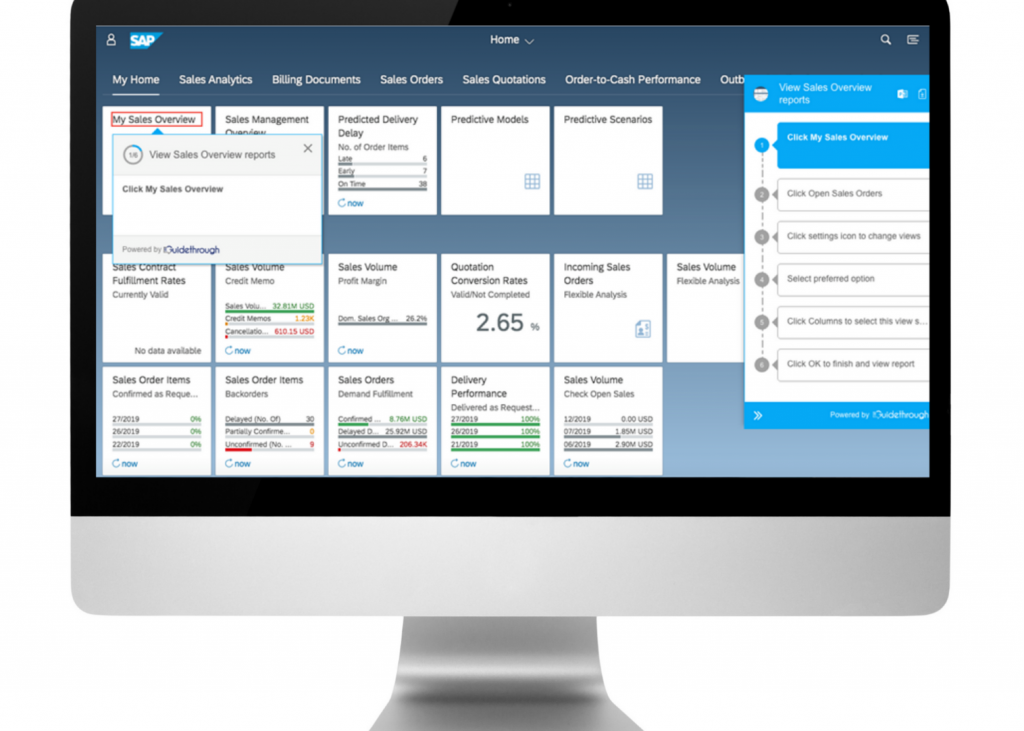What is a digital adoption platform?

Many factors have been driving the digitisation of business processes in organisations today. Growing customer expectations to transact online, increased competition and organisations seeking to reduce operational costs. The COVID-19 pandemic has also forced many businesses to transition their operations online in a very short space of time. Organisations in Australia have done a pretty good job moving online since March this year. However, as you dig a little deeper the cracks start to show. Organisations have been forced to adopt new technology in a short space of time with little to no training. They’ve learnt the basics however they are not realising the full benefits of their new technology platforms.
A survey conducted by Knoa Software revealed that only 8.4% of enterprise software errors are system-related; the remaining 91.6% of errors are related to the user, design or process. What this tells us is that addressing the process and training elements can have a significant impact on the organisations performance. This is where digital adoption platforms can assist.
What is digital adoption?
Digital adoption is when an organisation has achieved a state where digital tools are being used as intended and to their maximum capabilities.
Digital adoption could apply to not only your internal staff but also your clients or customers if they are interacting with you online.
A lack of digital skills impedes innovation, increases people costs, and affects the customer experience, so it makes sense for businesses to strive for digital adoption, and not just digital competence.
In a perfect world everyone in your organisation would have the technology skills to use the various products to their maximum potential. What a lot of businesses don’t know is that there are a number of digital adoption platforms on the market that reduce formal training timeframes and costs and accelerate the rate of adoption.
What is a digital adoption platform?
A digital adoption platform is a SaaS application giving interactive, contextual screen guidance within an application, usually cloud-based. To put it simply a digital adoption solution will provide clear, up-to-date work instructions directly in the system your staff use day to day.
Some benefits of using a digital adoption solution are:
- Accelerated onboarding time
- Shorter training material development hours
- Standardised process execution and ability to scale
- Improved employee productivity
- Reduced support and escalation calls
- Increased software ROI
- Improved software adoption overall
- Reduced training and communication costs
Why would my business need a digital adoption Platform?
There are a number of situations where a digital adoption platform may be the difference between success or failure in your organisation:
- When rolling out a new technology
- When onboarding new staff
- When rolling out a new process
- For existing staff for processes that are important but rarely used
- For compliance reasons
Types of digital adoption platforms

Guidethrough
Founded in 2017 in Sydney, Australia, Guidethrough is a simple product to set up and use. There is no coding, you can create and publish content in minutes. The content creator and the end user do not need any technical expertise to us Guidethrough. It takes about 2-4 hours for a person to learn the full functionality of Guidethrough and to start creating content. Guidethrough is suited to organisations of any size due to it’s rapid implementation timeframes.
WalkMe
Founded in 2009 in Israel, WalkMe is a digital adoption platform that includes user analytics reporting. This enables you to pinpoint areas in your procedures where users are struggling. There is also some ability to automatically pre-fill fields based on repeatable steps. It takes approximately 2 weeks of training for someone to become competent with key WalkMe functionality and to start creating content. Walk Me is more suited to large organisations due to the more complex set up and advanced analytical functionality.
OnScreen
Founded in 2017 in the USA, Onscreen is a digital adoption platform that was initially designed for use with SAP applications. It can now be used for any web applications. It is targeted at large organisations using enterprise platforms such as SAP, Salesforce, SuccessFactors, Ariba, Workday and ServiceNow.
Digital adoption is only as effective as your processes
A digital adoption platform is an excellent tool for realising all of the benefits mentioned earlier, however it will only be as effective as your organisations understanding of its business processes. If you do not have well documented processes, then it will take you much longer to create content and you run the risk of merely replicating bad process and embedding inefficiencies. Having well-documented processes that have been optimised (future state process) by identifying and addressing bottlenecks and pain points (current state process) is best practice before implementing a digital adoption platform.
